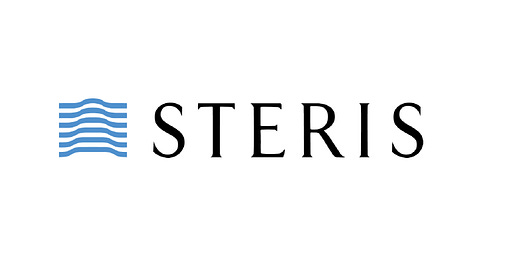Subscribe to AGB - One analysis of a good business every two weeks.
STERIS
STERIS is the leading provider of sterilization equipment and services globally with 72% of revenues generated in the U.S. and 28% internationally. Across its four business segments: Healthcare, Advanced Sterilization Technologies (AST), Life Sciences and Dental, the company reaches customers in most industries within the healthcare sector including hospitals, surgery centers, dental practices, medical device manufacturers, biotechnology and pharmaceutical companies.
Sterilization is adopted by companies to prevent the occurrence and spread of infection. For healthcare customers, many of the tools used by doctors and technicians are typically used more than once. After a procedure is completed, these tools need to be washed, decontaminated, sterilized and then repackaged for future use. For medical device manufacturers, products need to be sterilized after they’ve been packaged so that they are ready for shipment…



